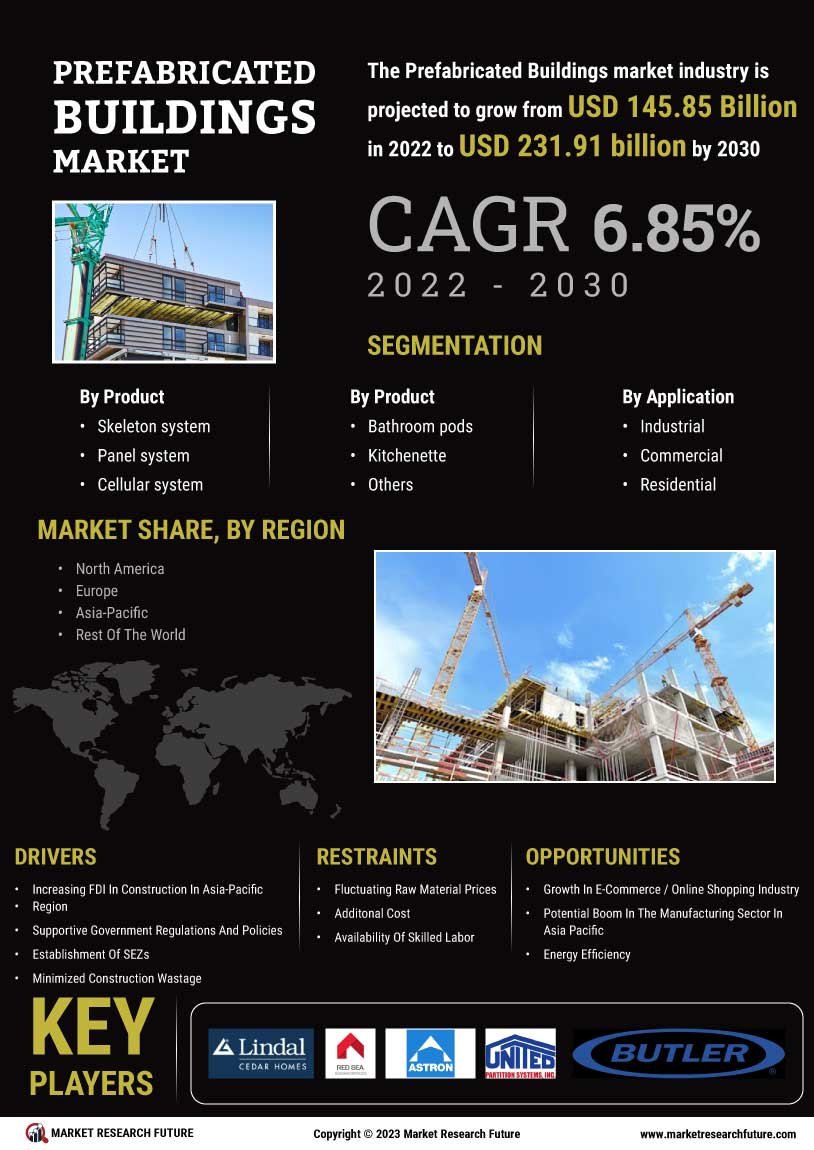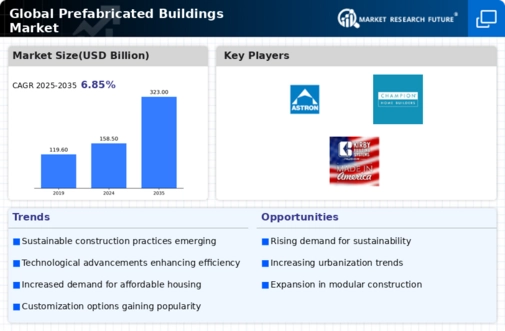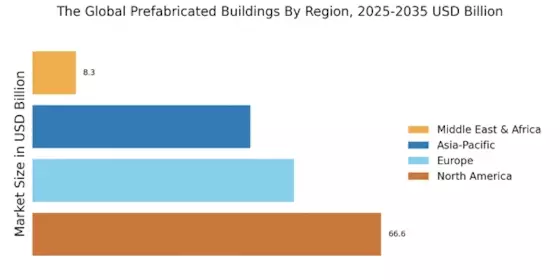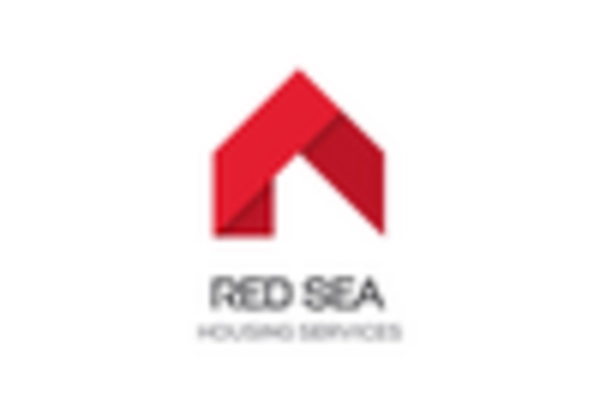Cost Efficiency
Cost efficiency remains a crucial driver for the prefabricated buildings market. The ability to reduce overall construction costs while maintaining quality is a compelling advantage of prefabricated structures. By minimizing labor costs and construction time, these buildings can be delivered to market more quickly and economically. Recent analyses indicate that prefabricated buildings can save up to 20% in construction costs compared to conventional building methods. This financial benefit is particularly appealing to developers and investors looking to maximize returns on investment. As economic pressures continue to influence the construction sector, the demand for cost-effective solutions is likely to bolster the growth of the prefabricated buildings market.
Urbanization Trends
The rapid pace of urbanization is a significant driver for the prefabricated buildings market. As populations in urban areas continue to swell, the demand for affordable housing and commercial spaces is escalating. It is estimated that by 2030, nearly 60% of the world's population will reside in urban areas, creating a pressing need for efficient construction solutions. Prefabricated buildings offer a viable response to this challenge, as they can be constructed quickly and at a lower cost compared to traditional methods. This trend is particularly evident in developing regions, where the need for housing is acute. Consequently, the prefabricated buildings market is poised for growth as urban centers seek innovative solutions to accommodate their expanding populations.
Sustainability Initiatives
Sustainability initiatives are becoming increasingly influential in shaping the prefabricated buildings market. The growing emphasis on eco-friendly construction practices and materials is driving the demand for prefabricated structures, which often utilize sustainable resources and reduce waste. According to recent studies, prefabricated buildings can reduce construction waste by up to 90%, making them an attractive option for environmentally conscious developers. Additionally, the energy efficiency of these buildings, often designed to meet stringent environmental standards, contributes to their appeal. As governments and organizations worldwide implement stricter regulations on carbon emissions and sustainability, the prefabricated buildings market is likely to experience a surge in demand, aligning with global efforts to combat climate change.
Technological Advancements
The integration of advanced technologies in the construction process appears to be a pivotal driver for the prefabricated buildings market. Innovations such as Building Information Modeling (BIM) and modular construction techniques enhance efficiency and precision, reducing construction time and costs. The market is projected to grow at a compound annual growth rate (CAGR) of approximately 6.5% from 2025 to 2030, driven by these technological advancements. Furthermore, the adoption of automation and robotics in manufacturing prefabricated components is likely to streamline production processes, thereby increasing output and quality. As a result, stakeholders in the prefabricated buildings market are increasingly investing in technology to remain competitive and meet the rising demand for faster, cost-effective construction solutions.
Government Support and Regulations
Government support and favorable regulations are increasingly shaping the landscape of the prefabricated buildings market. Many governments are recognizing the potential of prefabricated construction to address housing shortages and promote sustainable development. Incentives such as tax breaks, grants, and streamlined permitting processes are being introduced to encourage the adoption of prefabricated building methods. Additionally, regulations that mandate sustainable building practices are further propelling the market forward. As policymakers continue to advocate for innovative construction solutions, the prefabricated buildings market is expected to benefit from enhanced support and a more conducive regulatory environment, fostering growth and innovation.


















Leave a Comment